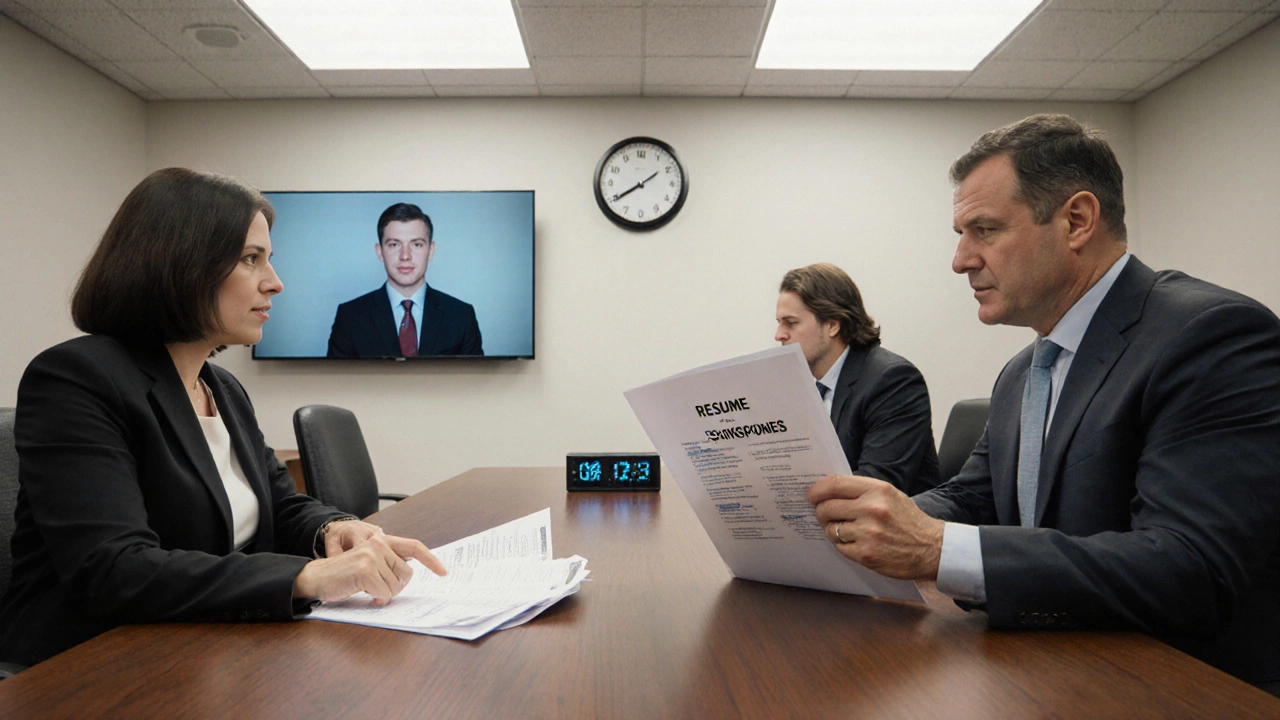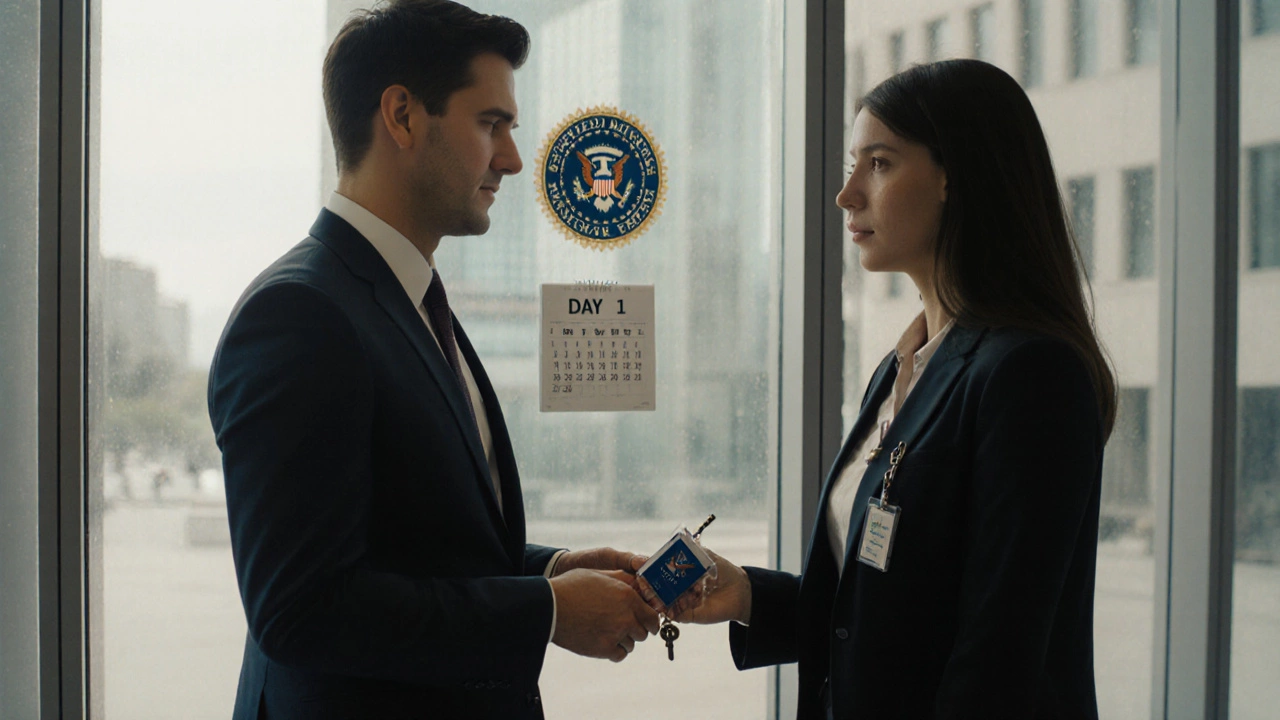Federal Job Eligibility Checker
Check your eligibility for U.S. government jobs based on citizenship status and visa type. Some positions require U.S. citizenship while others accept permanent residents or specific visa holders.
Getting hired by the U.S. government isn’t like applying for a job at a private company. There’s no quick LinkedIn message or casual interview. The process is structured, paperwork-heavy, and often takes months. But if you’re serious about working for agencies like the Department of Defense, NASA, or the IRS, it’s absolutely doable-even if you’re not a U.S. citizen. The key is knowing exactly what to do, when to do it, and how to stand out in a system designed to filter out the unprepared.
Understand Who Can Apply
Not everyone can apply for U.S. federal jobs. Most positions require U.S. citizenship. But there are exceptions. Some agencies hire non-citizens under specific programs. For example, the U.S. Postal Service and the Department of Veterans Affairs sometimes hire permanent residents (green card holders). Other agencies, like the World Bank or the United Nations, partner with U.S. government programs and accept international applicants for roles based in the U.S.
If you’re on a visa-like an H-1B, F-1, or L-1-you need to check the job announcement carefully. Some postings say “U.S. citizens and nationals only.” Others say “U.S. citizens, nationals, or individuals authorized to work.” If it says the latter, you might qualify. But don’t assume. Read every word.
Find the Right Job Portal
The only official place to apply for U.S. federal jobs is USAJobs.gov. No exceptions. Third-party sites might claim to help, but they’re either outdated or scams. USAJobs is free, updated daily, and connects directly to hiring managers across 100+ federal agencies.
Set up a profile on USAJobs. Upload your resume, but don’t just copy-paste your corporate resume. The system needs specific details: your work history in chronological order, job titles, employer names, hours per week, and exact duties. Use plain language. Avoid buzzwords like “synergy” or “leveraged.” Instead, say: “Managed a team of 8 staff to process 500+ visa applications monthly.”
Use filters wisely. Filter by “Open to the public,” “Non-citizen eligible,” and “Remote or hybrid.” Set up email alerts for keywords like “immigration,” “data analyst,” or “contract specialist.” Check your alerts every day. Jobs close fast-sometimes in under a week.
Learn the Resume Format
U.S. federal resumes are longer and more detailed than private-sector ones. They’re usually 2-5 pages, sometimes more. You must include:
- Your full legal name and contact info
- Work history with exact start and end dates (month/year)
- Job title, employer, location, and hours per week
- Detailed descriptions of duties and accomplishments
- Education: school name, degree, major, graduation date
- Supervisor names and contact info (even if retired)
- Any certifications, licenses, or security clearances
- Volunteer work, if relevant
Many applicants fail because they use a one-page corporate resume. That won’t cut it. The system scans for keywords. If your resume doesn’t match the job announcement’s exact phrases, you get rejected automatically. For example, if the job asks for “experience with SF-86 forms,” you better mention “SF-86” in your resume. Don’t say “background check experience.” Use the official term.
Match Your Skills to the Job Announcement
Every job posting on USAJobs has a section called “Qualifications” and “Knowledge, Skills, and Abilities” (KSAs). These aren’t suggestions-they’re mandatory filters. You must prove you meet each one.
Here’s how: Copy the exact wording from the job announcement. Then write a short paragraph under each KSA explaining how you’ve done it. Don’t say “I’m good at communication.” Say: “As a project coordinator at XYZ Organization, I drafted and delivered monthly reports to 12 stakeholders, reducing miscommunication by 40% over six months.”
Use numbers. Use dates. Use real outcomes. The hiring panel reads hundreds of applications. Yours needs to stand out with concrete proof-not fluff.

Pass the Background Check
Most federal jobs require a background check. The level depends on the role. For entry-level jobs, it’s a basic check: criminal history, employment verification, credit review. For higher-level roles, you’ll fill out the SF-86 form-a 127-page questionnaire asking about your entire life since age 16.
Be honest. Lying on the SF-86 is grounds for immediate disqualification and possible criminal charges. Even small things matter: a past drug use, a foreign relative, a bankruptcy, or a long stay overseas. If you’ve had any of these, prepare a clear, truthful explanation. Don’t hide it. The government already has access to most of this data.
Start gathering documents early: tax records, school transcripts, rental agreements, employment letters. The process can take 6-12 months. If you’re applying for a job that requires a security clearance, start the paperwork the day you submit your application.
Prepare for the Interview
Federal interviews are usually structured. That means every candidate gets the same questions. Common ones include:
- “Tell me about a time you handled a difficult client.”
- “Describe a project where you had to meet a tight deadline.”
- “How do you prioritize tasks when everything is urgent?”
Use the STAR method: Situation, Task, Action, Result. Don’t just tell a story-structure it. Example: “In my last role (Situation), I was tasked with reducing document processing time (Task). I created a digital filing system using SharePoint (Action), which cut processing time by 60% in three months (Result).”
Interviews are often done by a panel of 3-5 people. Dress professionally. Arrive early (even if it’s virtual). Bring copies of your resume and any certifications. Ask one smart question at the end: “What does success look like in this role in the first 90 days?”
Be Patient and Persistent
The average time from application to hire is 6-12 months. Some roles take longer. You might apply to 20 jobs and hear nothing. That’s normal. Don’t get discouraged. Keep applying. Update your resume every month. Add new skills, certifications, or volunteer work.
Many people give up after three applications. The winners keep going. They treat it like a full-time job. They check USAJobs daily. They follow up politely after 30 days. They ask for feedback if rejected.
And if you’re rejected? Ask why. Send a short email to the hiring manager: “Thank you for your time. Could you share any feedback on my application? I’m committed to improving.” Most won’t reply. But some will-and that feedback can be gold.

What Happens After You’re Hired
Once you get the offer, you’ll go through onboarding: setting up your government email, getting a badge, attending security training, and signing forms. Your salary will be based on the General Schedule (GS) pay scale, which has 15 grades and 10 steps per grade. Your starting pay depends on your experience, education, and location.
You’ll also get benefits most private jobs don’t offer: paid leave (13-26 days/year), health insurance, retirement plans (FERS or CSRS), tuition assistance, and telework options. Many agencies offer relocation assistance if you’re moving from overseas.
Don’t expect fast promotions. Advancement is slow but steady. You’ll need to pass performance reviews, complete training, and sometimes compete in open competitions. But the job security? It’s unmatched.
Common Mistakes to Avoid
- Applying without reading the full job announcement
- Using a one-page resume
- Not matching keywords from the posting
- Skipping the KSAs
- Waiting until the last day to apply
- Not preparing for the background check
- Assuming a visa equals eligibility
One applicant I know applied for 17 jobs over six months. He got rejected 15 times. The 16th application? He rewrote his resume to mirror the job posting word-for-word. He got the interview. He got the job. He’s now a senior analyst at the Environmental Protection Agency.
Next Steps
Start today. Go to USAJobs.gov. Create your profile. Search for one job that matches your skills. Read the announcement. Rewrite your resume to match it. Submit it. Then do it again tomorrow. The system rewards persistence more than perfection.
You don’t need to be a U.S. citizen to start. You just need to be ready.
Can non-U.S. citizens apply for federal jobs?
Yes, but only for certain positions. Most federal jobs require U.S. citizenship. However, some agencies, like the U.S. Postal Service and the Department of Veterans Affairs, hire permanent residents (green card holders). A few roles in scientific, technical, or international fields may also be open to non-citizens if they’re authorized to work in the U.S. Always check the job announcement for the exact eligibility statement.
How long does it take to get hired by the U.S. government?
The process typically takes 6 to 12 months, sometimes longer. This includes applying, passing background checks, interviews, and onboarding. Some roles, especially those requiring security clearances, can take over a year. Patience and consistent follow-up are essential.
Do I need to take a test to get a federal job?
Some jobs require written tests, especially for law enforcement, fire, or technical roles. Most administrative or professional positions don’t have standardized tests. Instead, your application materials-resume, KSAs, and interview performance-are the main evaluation tools. Always check the job announcement for testing requirements.
What’s the difference between a federal resume and a private-sector resume?
Federal resumes are longer and more detailed. They require exact dates of employment, hours per week, supervisor contact info, and full descriptions of duties. Private-sector resumes are usually one to two pages and focus on achievements. Federal resumes must match the job announcement’s keywords exactly to pass automated screening systems.
Can I apply for multiple federal jobs at once?
Yes, you can apply for as many jobs as you qualify for. In fact, it’s recommended. Many applicants apply to 10-20 positions to increase their chances. Just make sure to tailor each resume and KSA response to the specific job. Don’t send the same application everywhere.
What if I’m rejected? Can I reapply?
Yes, you can reapply. Many people get rejected multiple times before getting hired. If you’re rejected, request feedback from the hiring office. Use it to improve your resume, KSA responses, or interview skills. Reapply to similar roles with updated materials. Persistence is one of the biggest predictors of success.
Are federal jobs worth it for foreigners?
If you’re eligible and prepared, yes. Federal jobs offer strong job security, excellent benefits, paid leave, retirement plans, and opportunities for advancement. Salaries are competitive, especially with cost-of-living adjustments. For many, it’s a path to long-term stability in the U.S., even if you start on a visa. The trade-off is time and effort-this isn’t a quick process, but the rewards are lasting.
There’s no shortcut. No magic trick. Just hard work, attention to detail, and the discipline to follow through. The U.S. government hires thousands of people every year. There’s room for you-if you’re ready to play by their rules.

